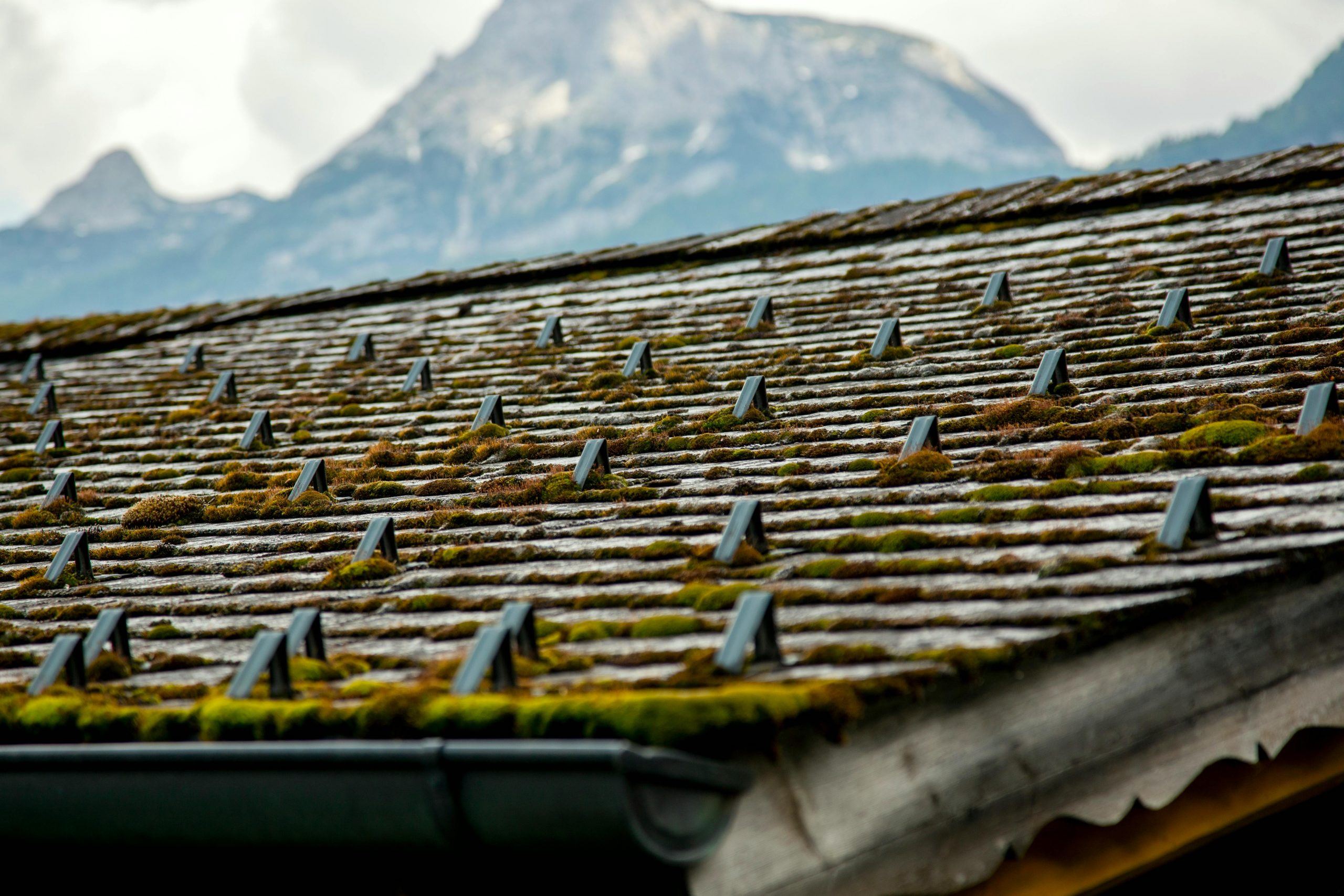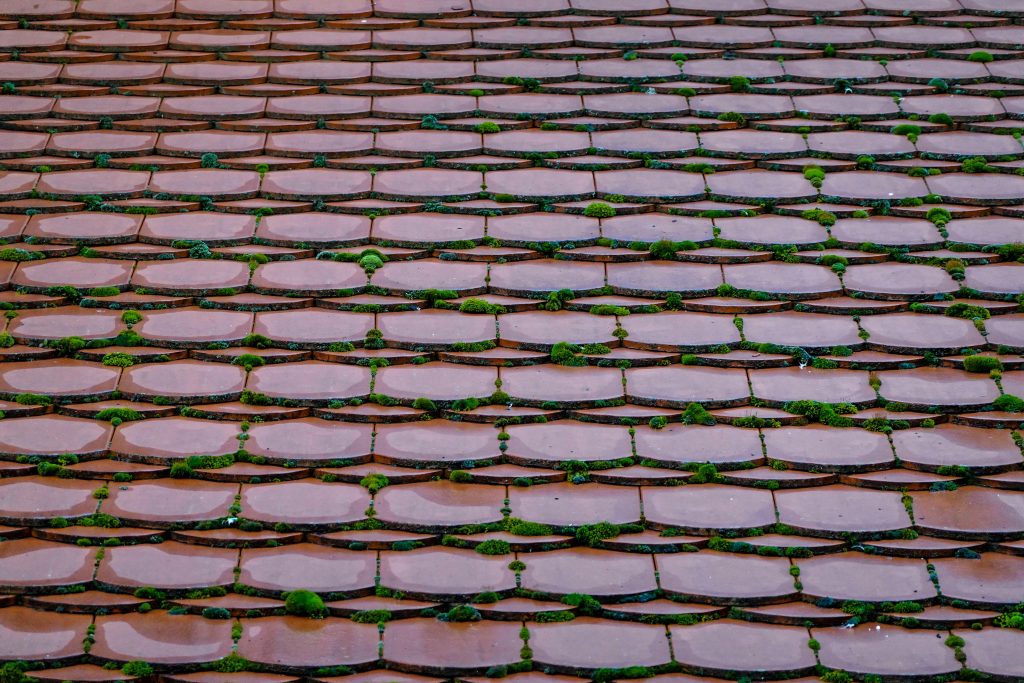
Moss on your roof might look quaint from the ground, but it can cause serious problems if left unchecked. Over time, moss retains moisture, which can lead to shingle deterioration, leaks, and even structural damage. If you’re a homeowner wondering how to get moss off roof and prevent it from coming back, this guide has you covered. From step-by-step cleaning methods to long-term prevention strategies, you’ll find everything you need to protect your home.
Why Moss Grows on Roofs in the First Place
Before diving into cleaning, it helps to understand why moss grows on roofs. Moss is a simple, non-vascular plant that thrives in environments that are consistently damp and shaded. While it may seem harmless, understanding the conditions that allow moss to flourish is key to both removing it and preventing its return.
Excess Moisture
Moisture is the number one factor that encourages moss growth. Roofs that experience frequent rain, high humidity, or persistent condensation provide the perfect breeding ground. Moisture collects in valleys, near gutters, and around roof fixtures like chimneys and skylights. If water doesn’t drain properly, it can create small pools where moss spores can take hold. Even in dry climates, shaded and poorly ventilated areas can remain damp enough for moss to survive.
Shady Spots
Moss prefers indirect sunlight and can’t tolerate intense, direct sunlight for long periods. Roofs shaded by tall trees, neighboring buildings, or roof structures themselves are particularly vulnerable. These shady areas remain cooler and damper, which slows evaporation and allows moss to thrive. If your roof has significant shade, you may notice moss growth appearing first in those areas.
Organic Buildup
Leaves, pine needles, twigs, and dirt accumulate naturally on roofs, especially in valleys and gutters. These organic materials trap moisture and provide nutrients that moss needs to survive. Over time, even a small amount of debris can create microenvironments perfect for moss colonization. Regular roof cleaning can help minimize this risk.
Old or Damaged Shingles
Aging or damaged shingles tend to absorb and hold water more easily than newer materials. Cracks, curled edges, or worn granules can trap moisture and give moss a foothold. Roofs that are nearing the end of their lifespan are often more susceptible, and failing to remove moss can accelerate the deterioration process.
Understanding these causes is essential. It helps you target problem areas during cleaning and implement preventive measures that reduce moss growth over time.
Is Moss Dangerous for Your Roof?

Many homeowners see moss as purely a cosmetic issue, but it can have serious long-term consequences if left untreated. Here’s a closer look at the risks:
Traps Moisture
Moss acts like a sponge, holding water against your roof’s surface. This constant moisture softens shingles, accelerates rot, and can cause underlayment to deteriorate. Over time, the trapped water may penetrate into the roof deck, leading to leaks and structural damage.
Shingle Lifting
As moss grows, it can creep under shingles, lifting them from their original position. This exposure makes the roof more vulnerable to wind damage and leaks. Even a small patch of moss can eventually compromise the integrity of surrounding shingles.
Increased Weight
While moss may seem lightweight, large, thick mats can add noticeable weight to your roof. This added burden puts stress on roofing materials, especially older roofs, and can exacerbate sagging or structural weaknesses.
Gutter Clogging
When moss breaks down, fragments often end up in gutters. This debris can cause clogs, leading to water backup, ice dams in colder climates, and water infiltration into your home’s walls and foundation.
In short, moss isn’t just unsightly—it can reduce your roof’s lifespan, lead to expensive repairs, and create safety hazards. Prompt removal and prevention are key to maintaining a healthy roof.
How to Get Moss Off Roof: Safety First
Roof cleaning may seem straightforward, but it’s important to approach it with caution. Wet shingles are slippery, ladders can be unstable, and steep or old roofs can be fragile. Always prioritize safety.
Wear Proper Gear
- Non-slip shoes with good traction
- Gloves to protect your hands from chemicals and sharp debris
- Eye protection to shield against chemical splashes and falling debris
Use a Sturdy Ladder
- Place ladders on level ground to prevent tipping
- Secure the top of the ladder, if possible, against the house
- Have someone nearby to hold the ladder or call for help in an emergency
Avoid Walking on Steep or Fragile Roofs
For high-pitched, old, or weakened roofs, walking can cause shingles to break or accelerate damage. Consider alternative methods like using long-handled tools or soft washing.
Use Safety Harnesses
A harness anchored to a secure point provides extra security, especially for steep roofs. It can prevent serious injuries in the event of a slip.
If at any point you feel uncertain about your safety or your roof’s condition, hiring a professional roof cleaner is the smartest choice. Professionals have the right tools, experience, and safety measures to handle moss removal efficiently.
Step 1: Cleaning the Roof Surface
Once safety is addressed, you can focus on removing the moss itself. There are multiple methods depending on the severity of the growth and your preference for chemical or natural solutions.
Manual Removal
- Use a long-handled soft brush or broom to gently scrub moss in the direction of the shingles.
- Avoid wire brushes or scraping tools, which can damage shingles and expose the underlayment.
- Never use a high-pressure washer—pressure can lift shingles, remove protective granules, and force water underneath, creating leaks.
Chemical Solutions
Sometimes manual removal isn’t enough. Moss-killing solutions can help:
- Homemade Mixtures: Mix equal parts water and white vinegar or a 50/50 water and bleach solution.
- Commercial Products: Look for products labeled as safe for asphalt, wood, or metal shingles. Always follow the manufacturer’s instructions carefully.
Chemical Application Tips:
- Apply early in the morning or late in the afternoon to prevent rapid evaporation.
- Avoid oversaturating the roof, which could harm nearby plants or gutters.
- Allow 15–20 minutes for the solution to work, then rinse gently with a hose or soft sprayer.
Step 2: Cleaning Gutters and Surrounding Areas
Moss often starts in roof valleys, around fixtures, or in gutters, so treating these areas improves overall results.
- Remove Leaves and Debris: Clear gutters and downspouts to prevent water pooling.
- Flush Gutters with Water: Check that water flows freely and isn’t accumulating.
- Trim Overhanging Branches: Reducing shade and leaf litter helps slow moss growth.
Well-maintained gutters protect more than just your roof—they prevent water damage to walls, foundations, and landscaping, while reducing conditions favorable for moss.
Step 3: Preventing Moss from Returning
Cleaning is only half the battle. Long-term prevention ensures you won’t be scrubbing moss every year.
Improve Sunlight Exposure
- Trim back tree branches that block sunlight.
- Selective pruning allows light to reach critical areas without removing trees entirely.
Install Zinc or Copper Strips
- Metal strips installed along the roof ridge slowly release ions that inhibit moss growth.
- Over time, these metals naturally prevent moss from establishing.
Maintain Proper Roof Ventilation
- Proper attic ventilation reduces moisture buildup that encourages moss growth.
- Periodically check insulation and vents for blockages or damage.
Regular Roof Inspections
- Inspect your roof at least twice a year, preferably in spring and fall.
- Spot small patches of moss, algae, or debris early.
- Remove moss promptly to prevent spread.
Use Moss-Resistant Shingles
- Consider algae- or moss-resistant shingles when replacing or repairing your roof.
- These materials are treated to resist moss growth and extend roof lifespan.
Natural Alternatives for Moss Control
For homeowners who want to avoid chemicals, several eco-friendly methods are effective:
- Baking Soda: Sprinkle lightly over moss patches; it changes the pH and discourages growth.
- Vinegar Solution: A mild vinegar spray kills moss gradually without harming plants.
- Boiling Water: Carefully pouring boiling water over moss patches removes them naturally.
These methods may take longer than chemical treatments but are safer for the environment, pets, and surrounding plants.
Common Questions About Roof Moss
Can I Pressure Wash My Roof?
While it may seem fast, pressure washing can damage shingles, lift granules, and force water under shingles, leading to leaks. Soft washing or gentle brushing is safer.
How Often Should I Remove Moss?
Check your roof twice a year. In shaded or damp areas, moss may grow faster, requiring annual or even semi-annual cleaning.
Is Roof Moss Dangerous to My Health?
Moss itself isn’t toxic, but damp moss encourages mold growth, which can affect indoor air quality if water penetrates your roof.
When Should I Call a Professional?
- Your roof is steep, fragile, or old.
- Moss growth is extensive and manual removal is impractical.
- You’re uncomfortable handling chemicals or ladders.
Professionals have the right equipment, experience, and safety measures to handle moss efficiently.
Long-Term Roof Care Tips
Keeping your roof moss-free is a matter of consistent care. Here are some strategies to extend the life of your shingles and maintain a clean roof:
- Clean gutters regularly to prevent water buildup.
- Remove debris promptly, especially leaves and pine needles.
- Inspect flashing and valleys for water damage or moss buildup.
- Ensure proper attic ventilation to reduce condensation on shingles.
- Trim overhanging branches to let sunlight reach your roof.
- Consider zinc or copper strips for long-term moss control.
- Schedule annual or bi-annual roof inspections to catch problems early.
Following these steps helps your roof stay healthier, saves money on repairs, and reduces the risk of moss regrowth.
Wrapping Up
Moss is a persistent problem for many homeowners, but it’s manageable with the right approach. Start with understanding why moss grows, use safe and effective cleaning methods, and then implement preventative measures. Whether you tackle it yourself or hire professionals, consistent maintenance is key.
Remember, removing moss isn’t just about aesthetics—it protects your roof from moisture damage, prolongs its lifespan, and ensures your home stays safe and dry. By combining proper cleaning, preventative treatments, and regular inspections, you can enjoy a moss-free roof year-round.
